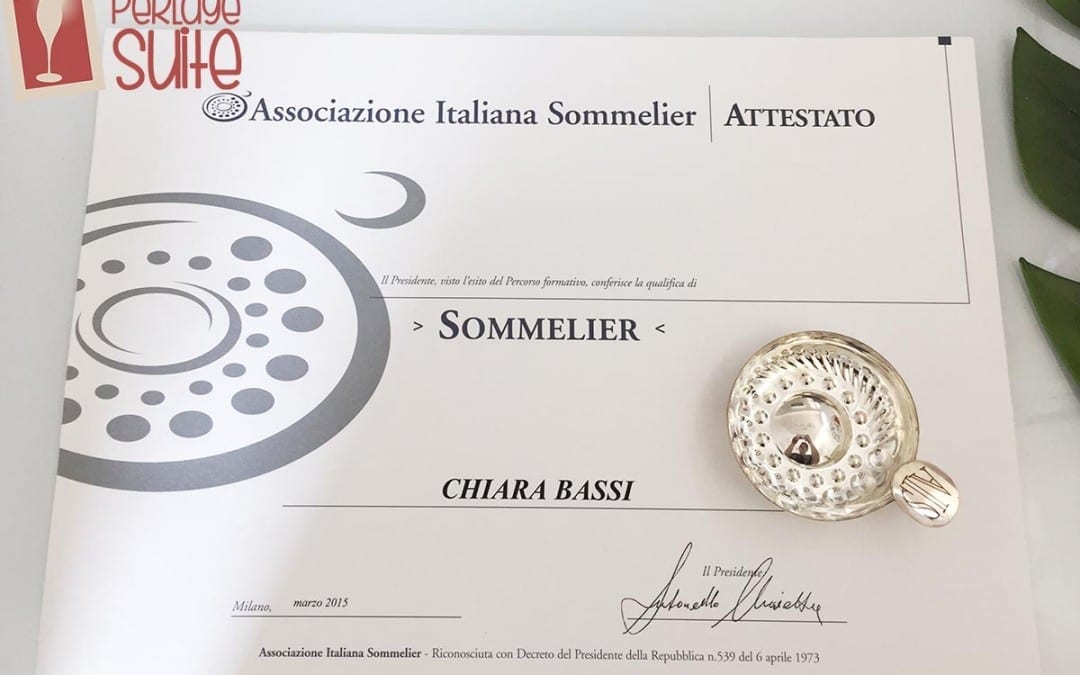Everything changes, even the Italian Sommelier Association. And with it, its famous AIS exam is changing. Since you often email me to find out how the AIS exam has changed, here is a comparison with the old exam and the new methods. The new AIS exam is probably more streamlined, but that is not to be belittled or considered easier.
Attention! Remember that you can only take the AIS examination if:
- you are up to date with the payment of your dues to the Italian Sommelier Association for the current year;
- you have completed the third level;
- you have not made more than two absences per level.
Also, you must not let more than 5 years pass between levels, or you will have to repeat the previous level. Ah, also stop talking about 'Level I Sommelier' or 'Level II Sommelier'... until you have taken the exam you are all aspiring Sommeliers! The Level I and Level II exams do not exist, at the end of the lessons there is only a self-assessment questionnaire. Just as the Level I Engineer does not exist because he has attended the first year of university, neither does the Level I Sommelier. One becomes an Engineer after graduating in exactly the same way as one becomes a Sommelier after passing the exam and obtaining the qualification.
Italian Sommelier Association: how was the examination structured before?
Even when I took the exam there was a Quiz with 20 true-false questions, but it was only worth 2 points. The big change, however, was in the written examination: previously there were only 20 multiple-choice questions and they counted for just 4 points in total. The bulk of the written exam was the 12 open questions that were worth a whopping 24 points. Time was short and I remember not being able to finish them. Moreover, the captain phenomena were 'annoyed' at the beginning: open question did not mean rambling, but hitting the point in the answer.
I can't tell you whether I think answering 12 open-ended questions was more difficult than answering multiple-choice questions, with up to 4 correct answers out of 4. Honestly, the multiple-choice questions, especially if they are trick questions, really throw me off. I remember when I took the exam I didn't complete the open-ended questions part, but the ones I did were all right. With the exception of the Campania AOCs which I don't seem to remember completely. Instead of the multiple choice questions I got quite a few wrong....
I tell you this because I would like today's new recruits not to be discriminated against by those who took the sommelier exam in the old way. If the Italian Sommelier Association has decided to eliminate the 12 open questions it will have done so with full knowledge of the facts. I have read a lot of controversy on social media and I don't like it.
NEW AIS EXAMINATION
Exactly as before, the examination is divided into a written test and an oral test. The written test must take place within 7-20 days after the conclusion of the third-level lessons, while the oral test must take place within 14-28 days after the written test.
The written test achieves a total score of 50/100 and is divided into four parts:
- True/False answer quiz
- Twenty-five multiple choice questions with several correct answer options (1 to 4).
- Two wine tastings for which a tasting sheet must be written.
- A food/wine pairing.
To be admitted to the oral test, you must score a minimum of 30/50 on the written test.
The oral test allows a total score of 50/100 and is divided into 3 parts:
- Proof of service (5 points)
- Tasting test (10 points)
- Interview with the examiner (35 points)
To be anointed a sommelier, you must score a minimum total of 60/100 between the two tests.
If you do not pass the exam, you can give it two more times before you have to repeat the third level. At least 60 days must elapse between each attempt.
Remember that your grade will not appear on your diploma and in your life as a professional or amateur sommelier it will be of no use to you. What you need is to continue studying and travelling, seeing vineyards, meeting producers and tasting wines. All with an open mind, without prejudices of winemaker, without prejudices of price, without prejudices of vineyard management method.
Remember that the Italian Sommelier Association has 2 objectives:
- Qualifying the figure and profession of the Sommelier;
- Enhancing the culture of wine, traditional and typical food products and gastronomy.
For every sommelier who is born, the association achieves the first goal, but it is only for every new sommelier who travels, discovers the traditions and products of a place and communicates them to the world that it also achieves the second goal.
It is no coincidence that there is no exam grade but we speak of 'suitability'.
With infinite love for the Italian Sommelier Association, which instilled in me a hunger for knowledge (I have always had a hunger for food 😄), I wish thegood luck to everyone! 🍀
Cheers 🍷
Chiara
P.S. You can consult the complete regulations in the Training Area of the Italian Sommelier Association HERE.


